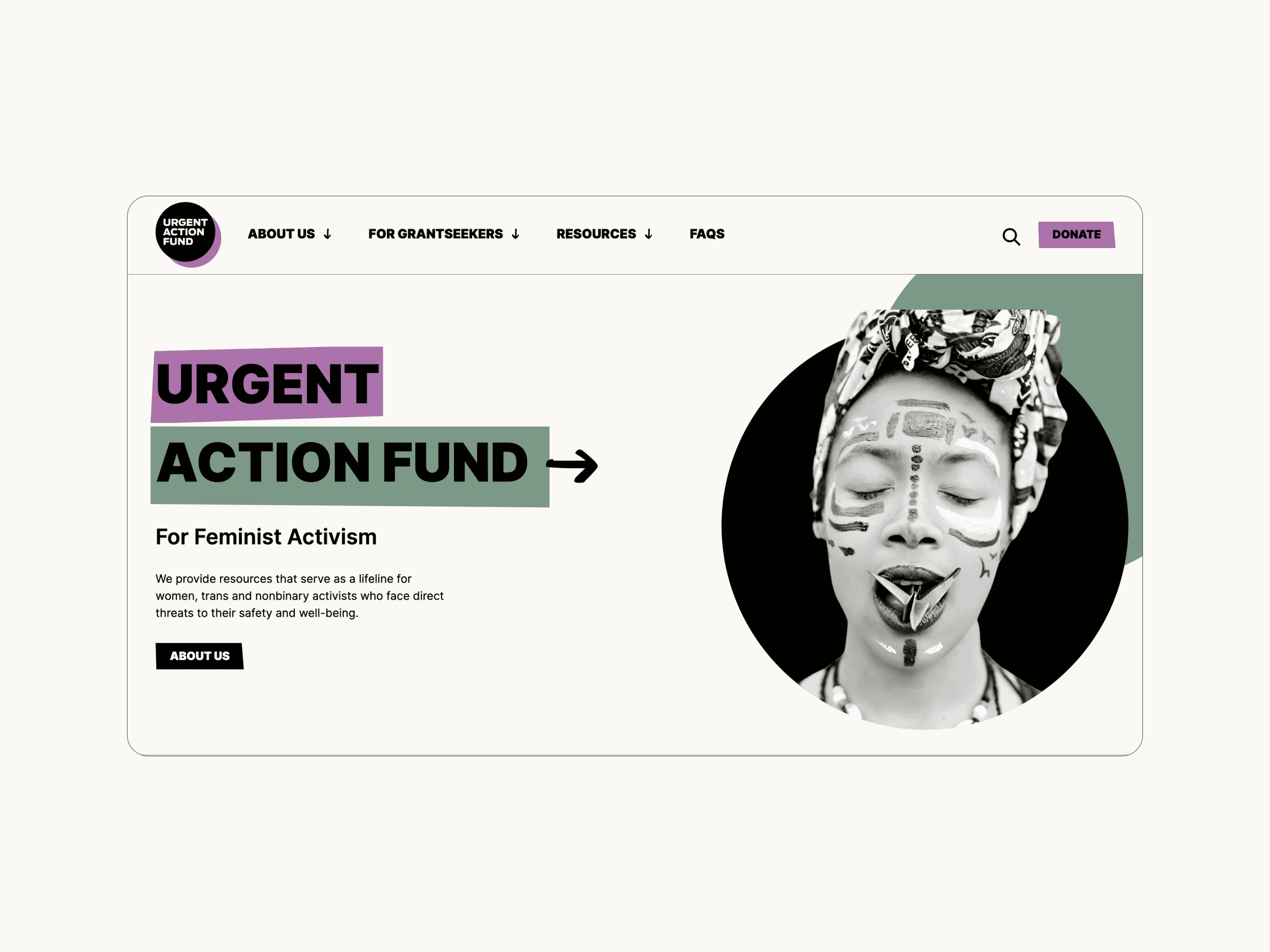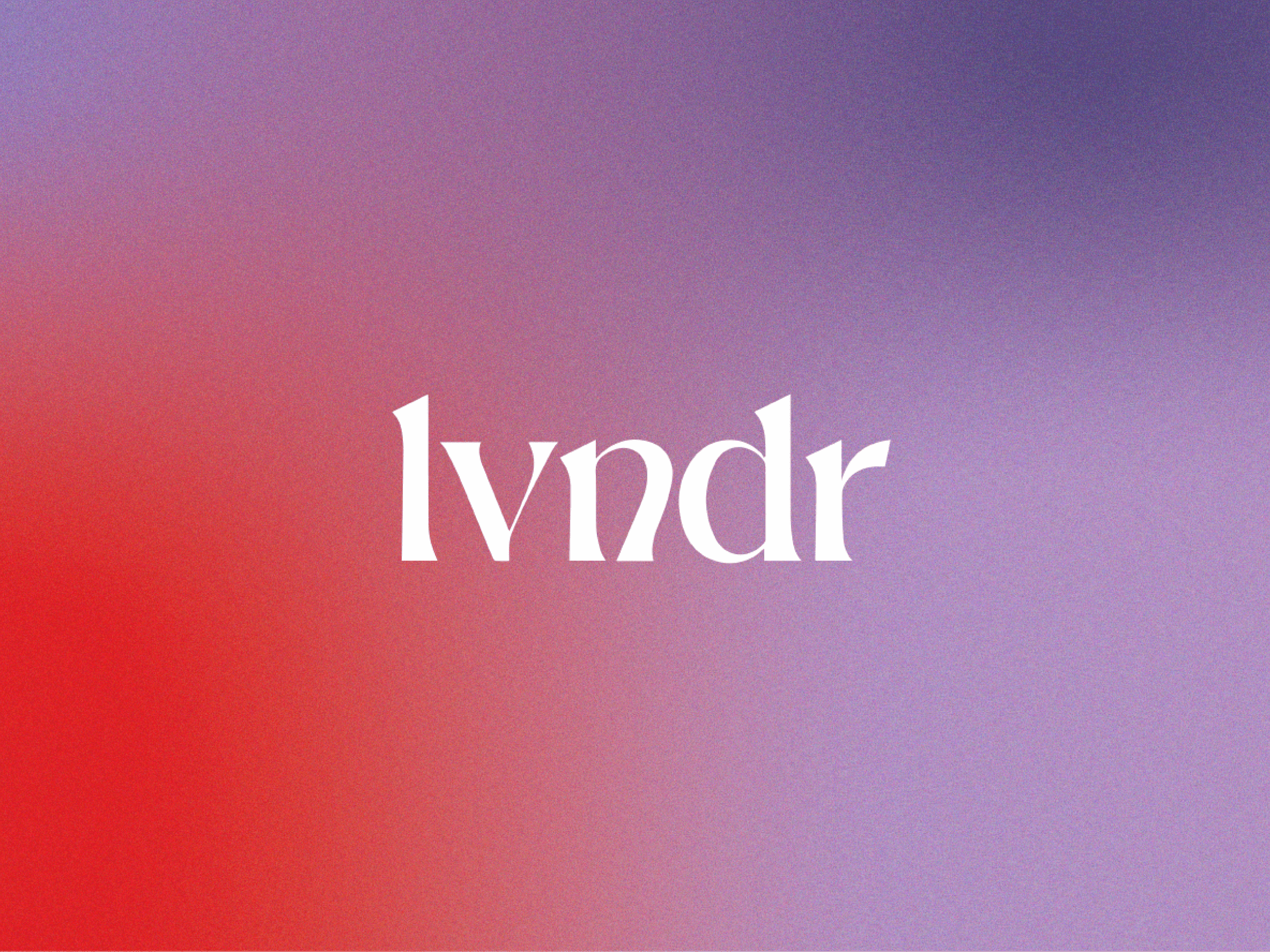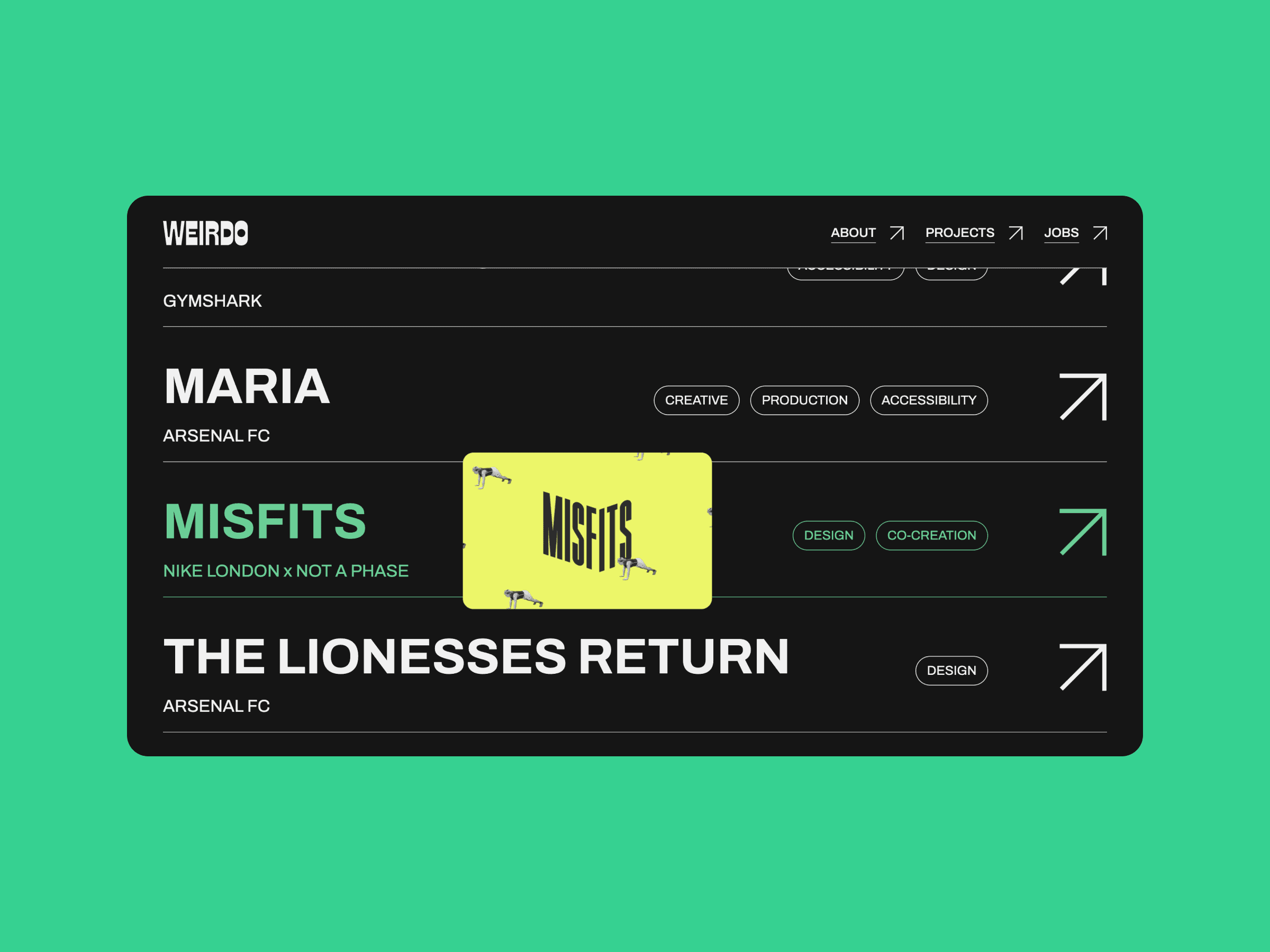/lu:talika/
Digital Design
Digital Design, specifically Web Design, is our most popular service. We’ve designed websites for global organisations such as Urgent Action Fund for Feminist Activism, individuals such as Jessica Lanyadoo and UK Trans charity Not a Phase. Between our talented core team and our wider pool of specialists, we can answer all of your digital design needs.
A website can be many things, but first and foremost it’s an opportunity to make a connection. When someone first hears about you or your enterprise, their most likely next move is to Google you. Creating a site that effectively represents you will help you hit it off with your audience, regardless of what you do.
That said, if you’re an e-commerce business, a blog or your website is an integral part of your offering, it is worth setting aside time and resources to create a custom site that meets all your requirements. In the digital age, your website shouldn’t be thought of as just another platform, but an active part of your business.
We always design websites that are ‘responsive’ to the device your visitor is using. At the time of writing, it’s estimated that over 55% of all internet traffic comes from mobile, compared to 42% from desktop and 2% from tablet (GlobalStats, 2023). Different devices require different designs. People often behave differently, depending on device type, and size *matters* when it comes to user interface design – a thumbprint on a phone has far less precision than a cursor on a mouse.
Note: before we can get started on your website design, we need to have a sense of your visual identity, and brand guidelines. If you don’t have brand guidelines yet, we’ll begin the process by creating some for you. Take a look at our Branding Services to find out more.
UX/UI stands for User Experience and User Interface. Though they come as a pair, we believe UX and UI are fundamentally different (but linked) areas of digital design.
User Experience is about optimising how your audience uses your website or app. It might help to think of UX from the perspective of a website visitor. Our job is to work with you to map out the journey, or potential journeys, visitors might make through your website.
User Interface describes the website itself. Everything on your website is technically UI, but the key elements designers focus on include the Navigation Bar, Buttons, Links, and CTAs (Call to Actions). These are the signposts that help your visitor navigate your website successfully.
Let’s say your business goal is to get more clients, the end-point of the journey might be a contact form on the services page. To get the visitor to take this ultimate action, the user journey might begin with a showreel, a warm welcome or some interest-based content to build trust, excitement or familiarity before getting to ‘the hard sell.’ There might be a number of routes to increase these positive feelings, alongside options to go directly to the end-point of the journey, to allow for individual differences between audience members.
UX/UI considers top-level journeys, as described above, but it also goes right down to the design of links and buttons. For example, if you want someone to click on a button to get to the next stage of the journey, you might ask: is the interaction between whitespace and content optimised to direct focus to the button? Is the button text exciting? Is it clear what is being offered, should the user click on the button?
Fundamentally, UX/UI is an interaction between the needs of your audience and the needs of your business or organisation. What do they want from you and what do you want from them? This doesn’t mean being aggressive or controlling. If all goes well, your goals and those of your audience won’t be in conflict: ultimately, you want to leave your site visitor feeling satisfied so they keep coming back!
Web Development is a massive field! Generally speaking, Developers will specialise in one or two platforms, so finding the right developer for you will depend, in part, on the CMS platform you use.
CMS stands for Content Management System. It is the digital software on which your website is built. CMS platforms you might be familiar with include WordPress, Webflow, Shopify, Wix, Editor X and Headless – and we’ve built great websites on each of these platforms. If the CMS platform you use isn’t listed here, please do get in touch as we are expanding our pool of queer and feminist developers all the time.
There are a number of things to consider when it comes to picking the right CMS platform for you. The CMS platforms listed above have different benefits, limitations and price points. We’ve listed some of them below to get you thinking.
WordPress
WordPress is the platform we generally recommend to clients.
One of the reasons we recommend WordPress is that you can create ‘modular layouts.’ This basically means creating pre-templated content blocks so that you can build new pages and edit the ones you already have, without needing to ask a Developer for help. We’ve created modular websites for Firefly Advising, re|scripted, Not A Phase and I’m From Driftwood, to name a few.
We often end up recommending modular solutions to charities, who might have the budget to build a new website now but won’t necessarily have the extra budget for future updates. That said, modular layouts are useful for anyone who might need to make quick and cheap edits to their website but doesn’t have a developer in-house. With a modular layout, you can put up a quick announcement or a page advertising an event or a new blog post, without too much bother.
Below we talk about Shopify’s benefits as an e-commerce CMS platform, but WordPress has its own customisable e-commerce platform WooCommerce, which may meet all of your needs.
Webflow
Webflow, a cloud-based design tool and CMS. Some of our clients have used Webflow to build early versions of their websites themselves, without development experience, as it’s designed to be very user-friendly. This can be a bit of a poisoned chalice, as it is possible to upset the balance of a website if there’s too many people tinkering at once. However, we’ve built some incredible websites on Webflow, including our award-winning work on the inclusive advertising agency Weirdo and the LGBTQ+ sexual health startup LVNDR.
Headless
Headless has the benefit of being super fast as its servers are brand new. Its major advantage is that your options are theoretically limitless because a developer will code everything from scratch. You’re free to integrate any content management system, so if you use Airtable to organise products or content, you could code it in, directly. On the flip side, it can also be an expensive platform to build on. Because there’s no pre-existing architecture to fall back on, your development time goes up.
Similarly, if you add particular plug-ins, you’ll need a developer on-hand who knows your site well, in case the logic of these plug-ins changes and your site needs to follow suit.
Shopify
If you’re an e-commerce business or even an organisation that sells things as part of its offering, Shopify could be a great CMS platform for you. The coding for checkout, discounts, and subscriptions has already been done, so you don’t have to have it custom developed or use too many plug-ins (which can require ongoing maintenance to integrate with your site).
The downside, as always, with using out-the-box technology is some of your options may be limited. But as Shopify is one of the world-leading CMS platforms for e-commerce, you’ll have access to ongoing plug-in workarounds and online customer support from Shopify to help you navigate the back end of your website, after the design phase has finished.
Wix and Editor X
Wix and Editor X are popular CMS platforms amongst people who are not web developers. They have been designed with non-professionals in mind, so they’re easy to edit yourself, but there is also limited functionality.
The advantages are that it’s usually fairly easy to set up (provided you accept the limitations of the technology) and to edit yourself moving forwards. From a design perspective, we have found that the ease of editing is a bit of a double-edged sword. If you go down this route, you may want us to come back and check your work on an hourly contractual basis, so we can help you apply your brand guidelines correctly.
The stages of designing an app follow those of designing a website, in the main, so we won’t repeat everything we’ve said above here. That said, in the digital design world, apps are a very different beast and should be used to achieve slightly different goals for your website.
Unlike websites, where people might visit a website from multiple, large desktop screens, mobiles or tablets, it’s safe to assume that the majority of app users are coming from one single mobile screen, with about 3% coming from tablets.
Consequently, the key things you should consider when designing an app, compared to designing a website are:
- You’re designing for a limited number of screen sizes, so you can (and should) be more precise with your placement of elements.
- UX/UI becomes even more important for apps, as you’ll likely have a proportion of traffic from people multitasking or on public transport, for example. For these visitors, you want to make it super easy for them to get to where they want to go, as there may be multiple demands on their attention.
App experiences can be delivered online, but generally, apps are to be downloaded. This is a much bigger ask of your audience, so you need to think about why your offering needs to be an app, and what the visitor gets out of giving up their precious mobile data, time and attention.
One reason you may create an app over a website is if data collection, tracking or education is central to your offering. That’s why apps are a good option for lifestyle and fitness services. Another reason is if your offering benefits from a high amount of interactivity. Duolingo, which uses gaming techniques and tracks and rewards consistency, is a great example of maximising the potential of an app.
As a business or organisation, you also have many more tools at your disposal when you create an app: from push notifications to greater accuracy when it comes to collecting data, offering valuable insights that will help you develop your product or service.
Just be mindful that it’s in everyone’s best interest to balance these opportunities with respecting user privacy, and to ensure your app provides genuine value in exchange for the user’s investment of attention and data.
Web Design Process
We start with a discovery phase.
The discovery process allows us to scope out key project requirements, strategic objectives, your audience and your visual preferences. We’ll kick things off by sending over a series of questions and then reviewing your answers on a call, with key members of the team. It also helps us get to know each other and establish expectations, so it’s a really valuable part of the Digital Design process. Following on from the workshop, we’ll put together a moodboard so you can see the aesthetic direction we’re anticipating for the project. Depending on the outcome of the discovery phase, the moodboard document might be broken down by layout, animations and other specific functionalities.
We develop your site architecture.
The exact nature of this work will depend on the scope of the project. A complete package involves exploratory user journey mapping, as well as surveys and interviews with your audience, so we can create the most effective website architecture and navigation. For your review, we’ll deliver a sitemap, conveying the structure of the site and (if applicable) a migration plan and a UX discovery document, with insights into your audience’s on-site behaviour. Our UX Designers will also create wireframes for your review (a skeleton of the site to show the structure and the user journey). These are usually black and white and do not include the final content (text and images).
Our UI specialists create the design of the front-end.
When the wireframes and key functionality are established, our designers can develop the aesthetic concepts from the ideation stage and create full web page templates for your review. Normally, we’ll begin with key pages and iterate these across the full site, pending feedback and approval.
Development begins.
We typically divide our development phase into sprints, where we code the front end of a single page and set up the styles and header tags. We are always careful to write clean code for both accessibility and performance (SEO and page load speed) purposes.
We perform a round of checks and quality assurance (QA).
Our QA team will perform a series of checks and tests, to pick up any errors or issues. We then fix any bugs.
We hold a training session to explain how everything works.
When we design a website, we always consider the level of experience of the people who will be updating content on a day-to-day basis. For these people, we’ll hold a training session, which we’ll record so you can return to it as needed.
Content implementation can begin.
At this stage, text, images, videos and any other content can be uploaded. Some of our clients handle this stage of the process themselves, while others will hire us to take care of it.
Going live and after going live.
In preparation for going live, we’ll perform a final series of checks and bug fixes, and then migrate the site from staging to the main domain. Following completion of the development, we include 3 months of free bug fixes as part of our agreement. Many of our clients choose to set up an ongoing maintenance contract on top of this, which might cover QA, content implementation, SEO audits and delivering on future requests from your team.



